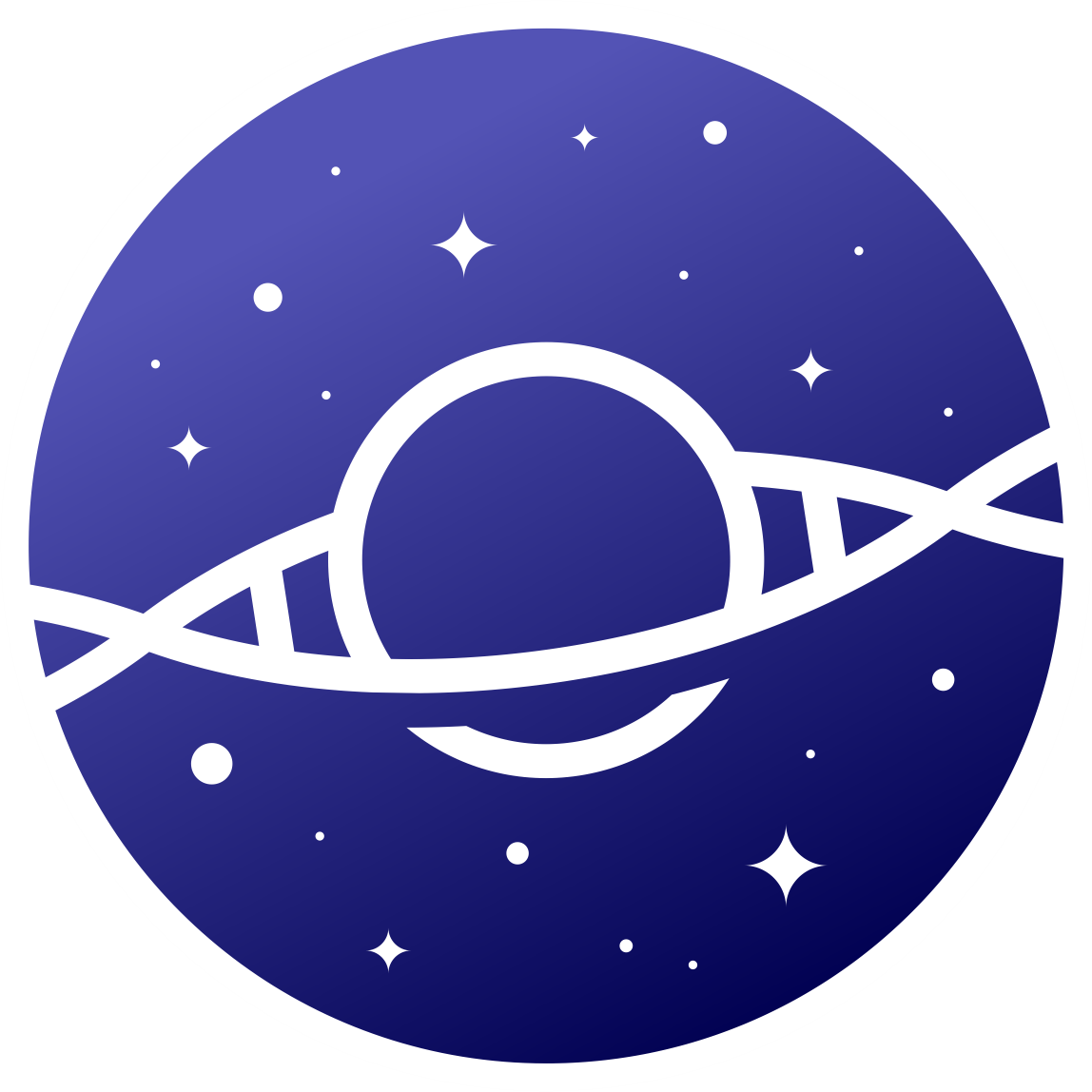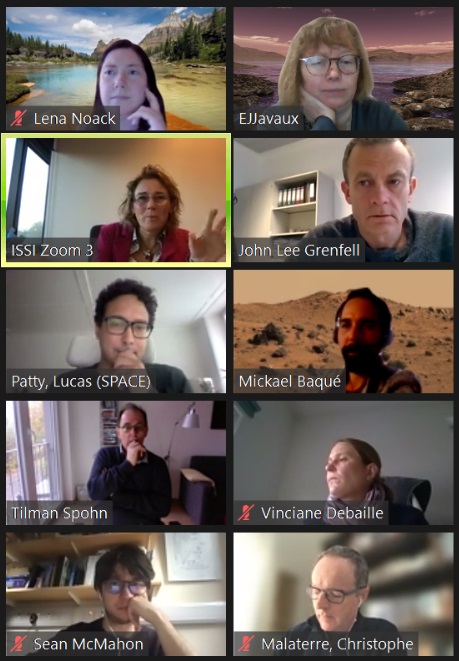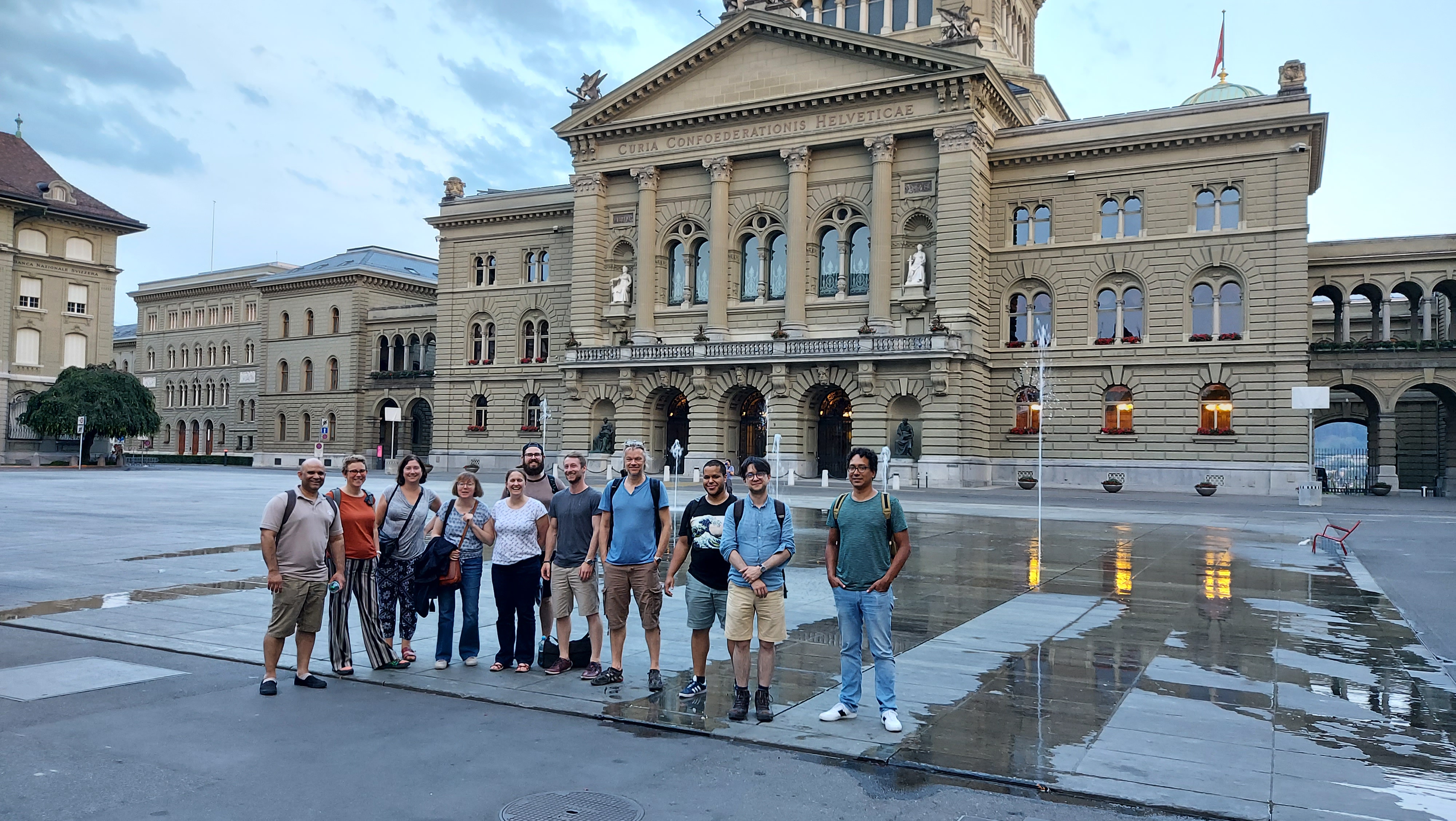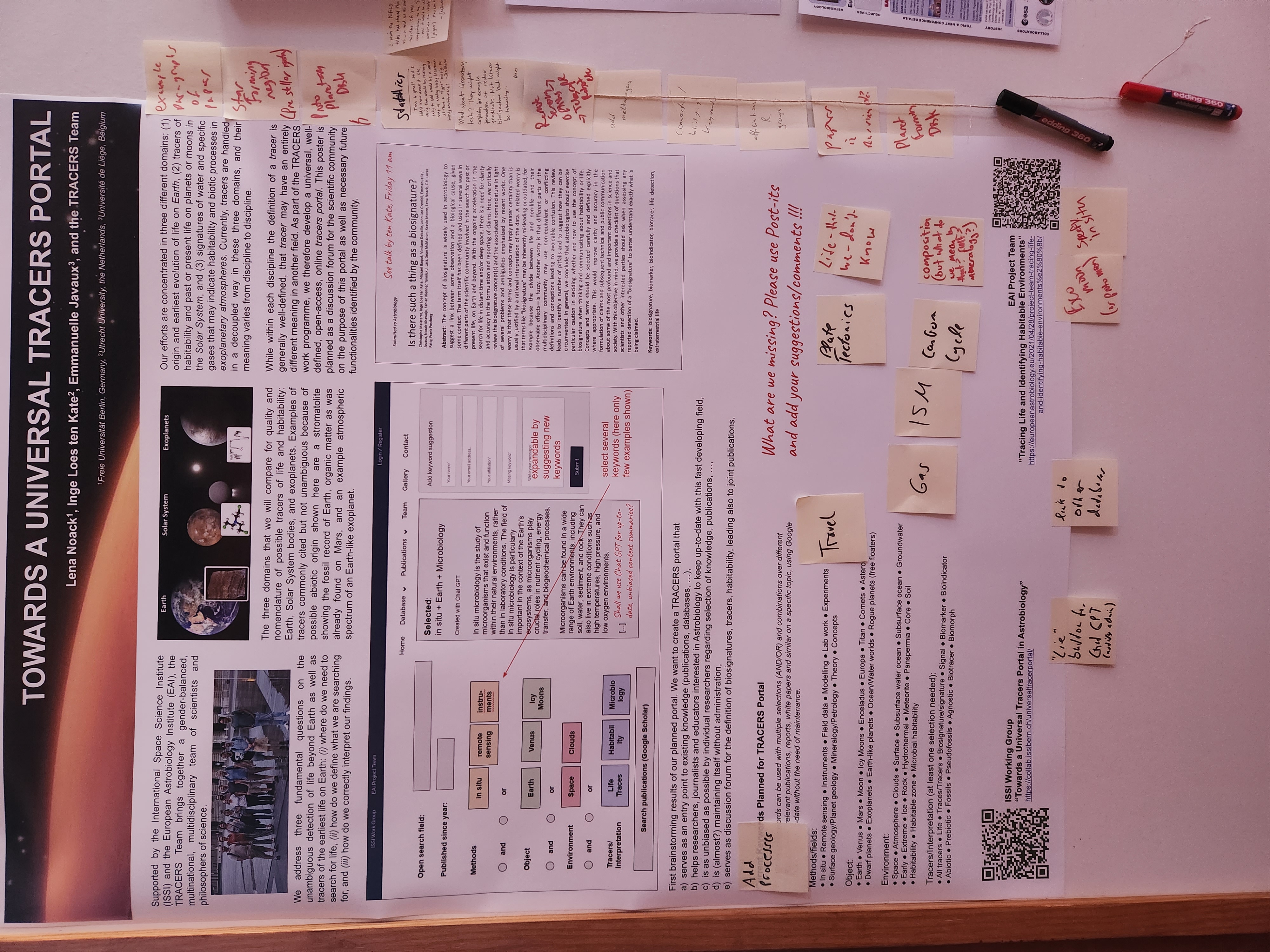Project description and events
Research problem, aims and relevance
Supported by the International Space Science Institute (ISSI) and the European Astrobiology Institute (EAI), the TRACERS Team brings together a gender-balanced, multinational, multidisciplinary team of scientists and philosophers of science.
We address three fundamental questions on the unambiguous detection of life beyond Earth as well as tracers of the earliest life on Earth:
(i) where do we need to search for life,
(ii) how do we define what we are searching for, and
(iii) how do we correctly interpret our findings.
The three domains that we will compare for quality and nomenclature of possible tracers of life and habitability: Earth, Solar System bodies, and exoplanets. Examples of tracers commonly cited but not unambiguous because of possible abiotic origin shown here are a stromatolite showing the fossil record of Earth, organic matter as was already found on Mars, and an example atmospheric spectrum of an Earth-like exoplanet.
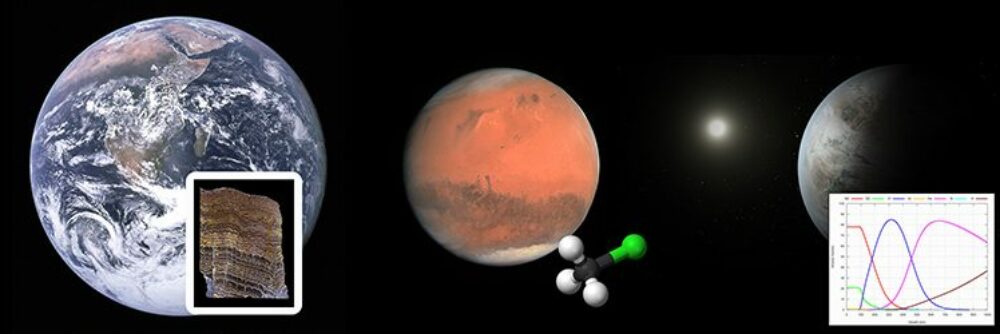
More specifically, our efforts are concentrated in three different domains: (1) origin and earliest evolution of life on Earth, (2) tracers of habitability and past or present life on planets or moons in the Solar System, and (3) signatures of water and specific gases that may indicate habitability and biotic processes in exoplanetary atmospheres. Currently, tracers are handled in a decoupled way in these three domains, and their meaning varies from discipline to discipline.
While within each discipline the definition of a tracer is generally well-defined, that tracer may have an entirely different meaning in another field. As part of the TRACERS work programme, we therefore developed this universal, well-defined, open-access, online tracers portal.
